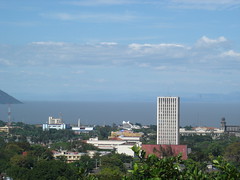
Tesla may have the celebrity cachet and media spotlight, but the humble, three-wheeled Triac is clearly the more practical choice for a "Green Core" consumer looking for a $25,000, all-electric vehicle with an honest 100-mile range. In a siliconvalley.com article, Mike Ryan, president of the firm based in Salinas, CA that produces the Triac, says that the car is aimed at people who have a more environmentally conscious lifestyle.
Key among the features is a sophisticated system for predicting remaining range before a recharge is needed.
The Triac will include a Vehicle Efficiency Data Assistant -- VEDA -- interface to the battery management system as well as diagnostic and navigational data. VEDA is an electronic learning system that captures a person's driving habits and commute patterns to accurately predict miles left before recharging.
"Range anxiety is something that gives people a lot of concern," Ryan said. "Say I forgot to charge my car. I'm at lunch. I want to run an errand before I go home. Will I make it home?"
Options in the electric car market are getting more expansive. The Triac is an interesting home-grown option that favors practicality over panache—and for many buyers that's a plus.


